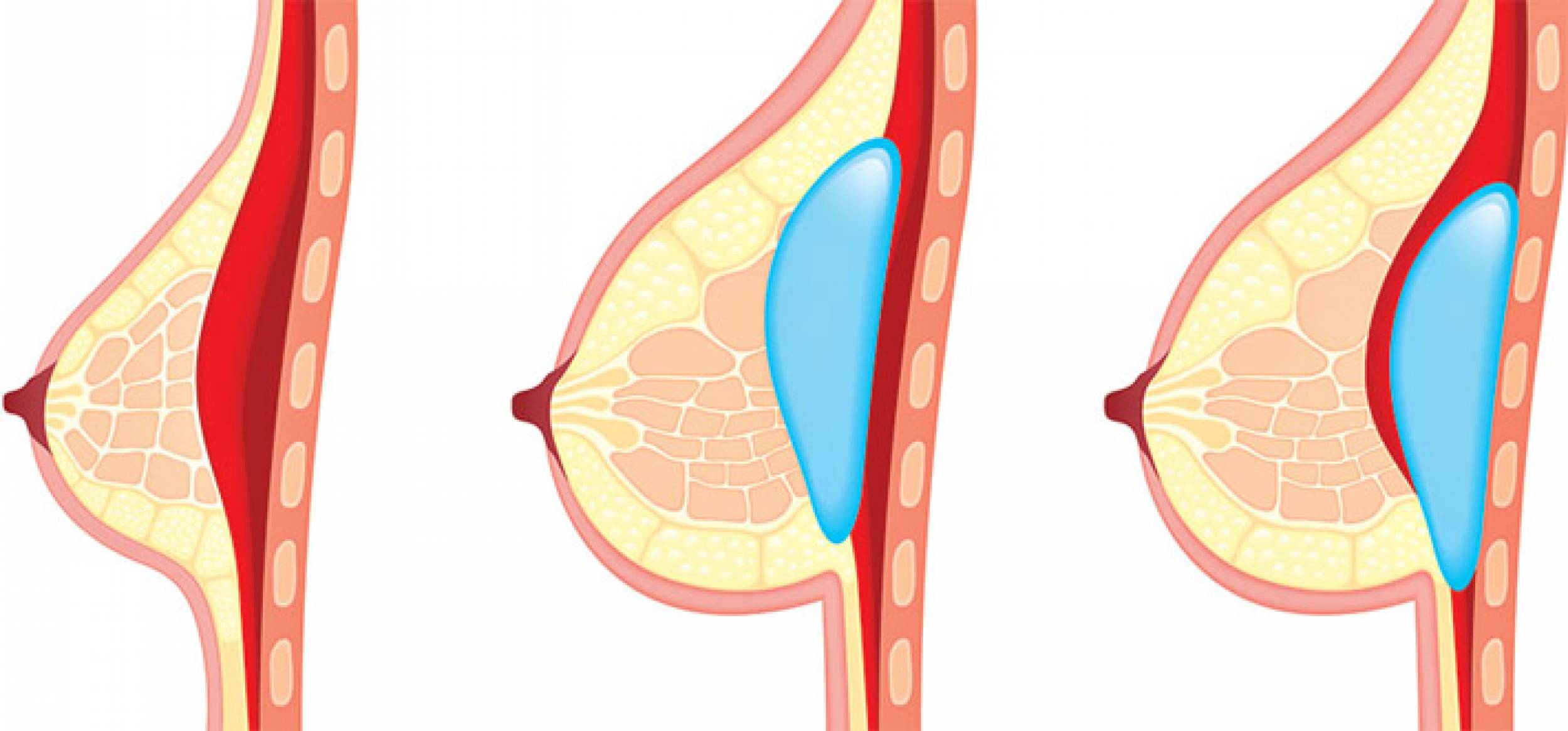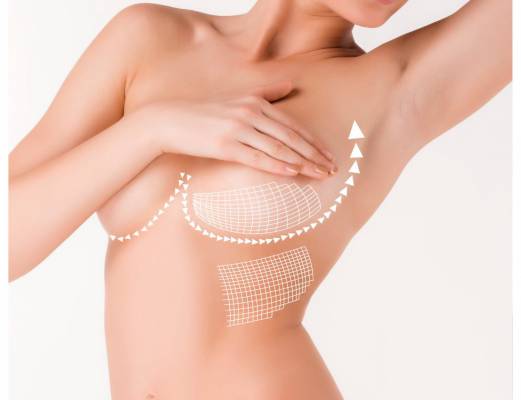Breast Augmentation

Breast Augmentation
Breast augmentation, technically known as augmentation mammoplasty, is a surgical procedure to enhance the size and shape of a woman’s breast for a number of reasons:
- To enhance the body contour of a woman who, for personal reasons, feels her breast size is too small.
- To correct a reduction in breast volume after a pregnancy.
- To balance a difference in breast size.
- As a reconstructive technique following breast surgery.
By inserting an implant behind each breast, Dr Makram is able to increase a woman’s bustline by one or more bra cup sizes. If you’re considering breast augmentation, this page will provide you with a basic understanding of the procedure – when it can help, how it is performed, and what results you can expect. You should know though that a lot depends on your individual circumstances. Therefore, make sure you ask Dr. Makram if there is anything you don’t understand about the procedure.
THE BEST CANDIDATES FOR BREAST AUGMENTATION
Breast augmentation can enhance your appearance and your self-confidence. But before you decide on the surgery, think carefully about your expectations and discuss them with Dr. Makram. The best candidates for breast augmentation are women who are looking for improvement in the way they look. If you’re physically healthy and realistic in your expectations, you may be a good candidate.
TYPES OF IMPLANTS
A breast implant is a silicone shell filled with either silicone gel or a salt-water solution known as saline. It has been proven that both implants (salt water solution and coherent silicone gel) do not to cause breast cancer.
ALL SURGERY CARRIES SOME UNCERTAINTY AND RISK
Breast augmentation is relatively straightforward. But as with any operation, there are risks associated with surgery and specific complications associated with this procedure. The most common problem, capsular contracture, occurs if the scar or capsule around the implant begins to tighten. This squeezing of the soft implant can cause the breast to feel hard. Capsular contracture can be treated in several ways, and sometimes requires either removal or “scoring” of the scar tissue, or removal and replacement of the implant.
As with any surgical procedure, excessive bleeding following the operation may cause some swelling and pain. If excessive bleeding continues, another operation may be needed to control the bleeding and remove the accumulated blood. A small percentage of women develop an infection around an implant. This may occur at any time, but is most often seen within a week after surgery. In some cases, the implant may need to be removed for several months until the infection clears. A new implant can then be inserted.
Some women report that their nipples become oversensitive, undersensitive, or even numb. Some may even notice small patches of numbness near the incisions. These symptoms usually disappear with time, but may be permanent for some patients. There is no evidence that breast implants affect fertility, pregnancy, or your ability to nurse. If, however, you have nursed a baby within the year before augmentation, you may produce milk for a few days after surgery. This may cause some discomfort, but can be treated with medication prescribed by your doctor.
Occasionally, breast implants may break or leak. Rupture can occur as a result of injury or even from the normal compression and movement of your breast and implant, causing the man-made shell to leak. If a saline-filled implant breaks, the implant will deflate in a few hours and the salt water will be harmlessly absorbed by the body.
If a break occurs in a gel-filled implant, however, one of two things may happen. Either no external shape modification takes place or there may be a change in the shape or firmness of the breast. Both types of breaks may require a second operation and replacement of the leaking implant.
While there is no evidence that breast implants might cause breast cancer, they may change the way mammography is done to detect cancer. When you request a routine mammogram, make sure you go to a radiology center where technicians are experienced in the special techniques required to get a reliable x-ray of a breast with an implant. Additional views will be required. Ultrasound examinations may be of benefit in some women with implants to detect breast lumps or to evaluate the implant. While the majority of women do not experience these complications, you should discuss each of them with your physician to make sure you understand the risks and consequences of breast augmentation.
PLANNING YOUR SURGERY
In your initial consultation, Dr. Makram evaluates your health and explains which surgical techniques are most appropriate for you, based on the condition of your breasts and skin tone. If your breasts are sagging, your doctor may also recommend a breast lift. Be sure to discuss your expectations frankly with Dr. Makram, as he will be equally frank with you, describing your alternatives and the risks and limitations of each.
You may want to ask Dr. Makram for a copy of the manufacturer’s insert that comes with the implant he will be using – just so you are fully informed about it. And, make sure you tell Dr. Makram if you smoke, and if you are taking any medications, vitamins, or other drugs. Dr. Makram will also explain the type of anesthesia to be used, the type of facility where the surgery will be performed, and the costs involved. Because most insurance companies do not consider breast augmentation to be medically necessary, carriers generally do not cover the cost of this procedure.
PREPARING FOR YOUR SURGERY
Dr. Makram will give you instructions to prepare for surgery, including guidelines on eating and drinking, smoking, and taking or avoiding certain vitamins and medications. While making preparations, make sure you arrange for someone to drive you home after your surgery and help you out for a few days, if needed.
WHERE YOUR SURGERY WILL BE PERFORMED
Dr. Makram may prefer to perform the operation in a freestanding surgery center, or a hospital outpatient facility. In most cases, the surgery is done on an inpatient basis in a hospital, in which case you can plan on staying for one day.
TYPES OF ANESTHESIA
Breast augmentation is usually performed under general anesthesia. In some cases, however, local anesthesia with sedation, or epidural anesthesia, might be used. Dr Makram will clarify this issue to you further.
THE SURGERY
The method of inserting and positioning your implant will depend on your anatomy and Dr. Makram’s recommendation. The incision can be made either in the crease where the breast meets the chest, around the areola (the dark skin surrounding the nipple), or in the armpit. Every effort will be made to assure that the incision is placed in such a way that resulting scars are as inconspicuous as possible.
Working through the incision, Dr Makram will lift your breast tissue and skin to create a pocket, either directly behind the breast tissue or underneath your chest wall muscle (the pectoral muscle). The implants are then centered beneath your nipples. Putting the implants behind your chest muscle may reduce the potential for capsular contracture and give a natural shape. Drainage tubes may be used for one day following the surgery. This placement may also interfere less with breast examination by mammogram than if the implant is placed directly behind the breast tissue. Placement behind the muscle however, may be more painful for a few days after surgery than placement directly under the breast tissue.
You should discuss the pros and cons of these alternatives with Dr. Makram before surgery to make sure you fully understand the implications of the procedure he recommends for you. The surgery usually takes one to two hours to complete and subcutaneous. A gauze bandage may be applied over your breasts to help with healing.
AFTER YOUR SURGERY
You are likely to feel tired and sore for a few days following your surgery, but you will be up and around in 24 to 48 hours. Most of your discomfort can be controlled by medication prescribed by your doctor. Within several days, the gauze dressings, if you have any, will be removed, and you may be given a surgical bra. You should wear it as directed by Dr. Makram. You may also experience a burning sensation in your nipples for about two weeks, but this will subside as bruising fades. The swelling in your breasts may take three to six months to disappear.
GETTING BACK TO NORMAL
You should be able to return to work within a few days, depending on the level of activity required in your job. Follow Dr. Makram’s advice on when to begin exercises and normal activities. Your breasts will probably be sensitive to direct stimulation for two to three weeks, so you should avoid much physical contact. After that, breast contact is fine once your breasts are no longer sore, usually three to four weeks after surgery.
Your scars will be firm and pink for at least six weeks. Then they may remain of the same size for several months or even appear to widen. After several months, your scars will begin to fade. Routine mammograms should be undergone after breast augmentation for women who are in the appropriate age group, knowing that the mammographic technician should use a special technique to assure that you get a reliable reading, as discussed earlier.
YOUR NEW LOOK
For many women, the result of breast augmentation can be satisfying, even exhilarating, as they learn to appreciate their fuller appearance. Routine mammograms for those in the appropriate age groups at prescribed intervals will help assure that complications, if any, can be detected early and treated. Your decision to have breast augmentation is a highly personal one that not everyone will understand. The important thing is how you feel about it. If you have met your goals, then your surgery is a success.

